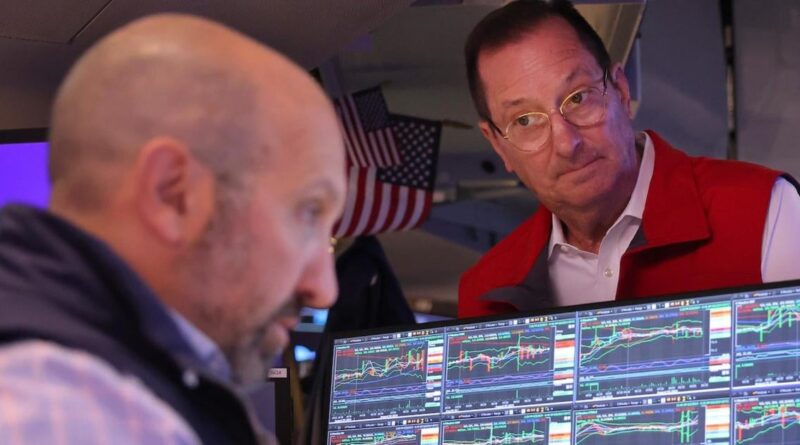Why is the stock market down today? S&P 500 and Dow slide in worst day of 2025.
Stocks tumbled on Friday after weaker-than-expected economic reports suggested that President Trump’s policies could be impacting U.S. business activity, while consumer sentiment dropped to a 15-month low.
Both the S&P 500 and the Dow Jones Industrial Average slumped 1.7% on Friday, marking their worst one-day declines since December 18, according to financial data firm FactSet. The tech-heavy Nasdaq composite index dropped 2.2%.
A preliminary report from S&P Global found U.S. business activity is nearing stall-speed, with growth decelerating to a 17-month low. Activity for U.S. services businesses unexpectedly shrank, and many businesses in the survey reported slumping optimism because of worries about policies from the Trump administration, including the potential for new tariffs and domestic spending cuts.
“Companies report widespread concerns about the impact of federal government policies, ranging from spending cuts to tariffs and geopolitical developments,” said Chris Williamson, chief business economist at S&P Global Market Intelligence. “Sales are reportedly being hit by the uncertainty caused by the changing political landscape, and prices are rising amid tariff-related price hikes from suppliers.”
Inflation worries also weighed on the stock market, with a University of Michigan survey finding that consumers are preparing for higher inflation due to potential tariffs. Because tariffs are taxes paid by importers, such as retailers such as Walmart, the costs are often passed onto consumers, raising prices.
Consumers say they are broadly expecting prices to be 4.3% higher 12 months from now, which is a big jump from last month’s forecast of 3.3% inflation, the University of Michigan survey found. That fits with preliminary data the survey suggested earlier, though a divide is evident underneath the surface.
Expectations for inflation are rising for political independents and Democrats, while falling slightly for Republicans.
A third economic report, meanwhile, said sales of previously occupied homes were weaker last month than economists expected. Relatively high mortgage rates have been hurting the housing market.
Walmart, Akamai
Other corporate reports have added to the sense of unease on Wall Street, including Walmart’s most recent earnings report. The retailing giant on Thursday provided a 2025 sales and profit forecast that was lower than analysts had expected, with executives warning about new challenges in an uncertain economic landscape.
Walmart shares slipped 2.5% on Friday, following a 6.5% decline on the prior day.
“With policy uncertainty and weaker retail sales guidance yesterday from consumer spending bellwether Walmart, we may have the catalyst we need for a healthy correction,” noted Gina Bolvin, president of Bolvin Wealth Management Group, in an email.
Akamai Technologies had the sharpest drop in the S&P 500, even though the cybersecurity and cloud computing company reported stronger profit than analysts expected. It lost a fifth of its value and fell 20.6% as investors focused instead on its forecasts for revenue and other financial measures this upcoming year, which fell short of analysts’ expectations.
Even within the big companies of the S&P 500 index, roughly 4 out of every 5 stocks fell. Everything from Big Tech stocks that have been bid up amid the artificial-intelligence frenzy to airlines to metals companies fell. Nvidia sank 2.5%. United Airlines lost 5.5%, and Newmont Mining fell 4.4%.
To be sure, the U.S. stock market is still up for the young year so far and is not far from its all-time high set earlier this week. Virtually no one on Wall Street is forecasting a recession anytime soon. But Friday’s reports together raise concerns about what’s been a remarkably resilient economy, and the ensuing losses on Wall Street were widespread.
Before Friday’s sharp drop, the S&P 500 had been heading for a week of almost zero movement. Helping to lift stocks had been a steady parade of better-than-expected profit reports. That worked against worries about stubbornly high inflation, which could prevent the Federal Reserve from delivering more relief for the economy and financial markets through lower interest rates.

